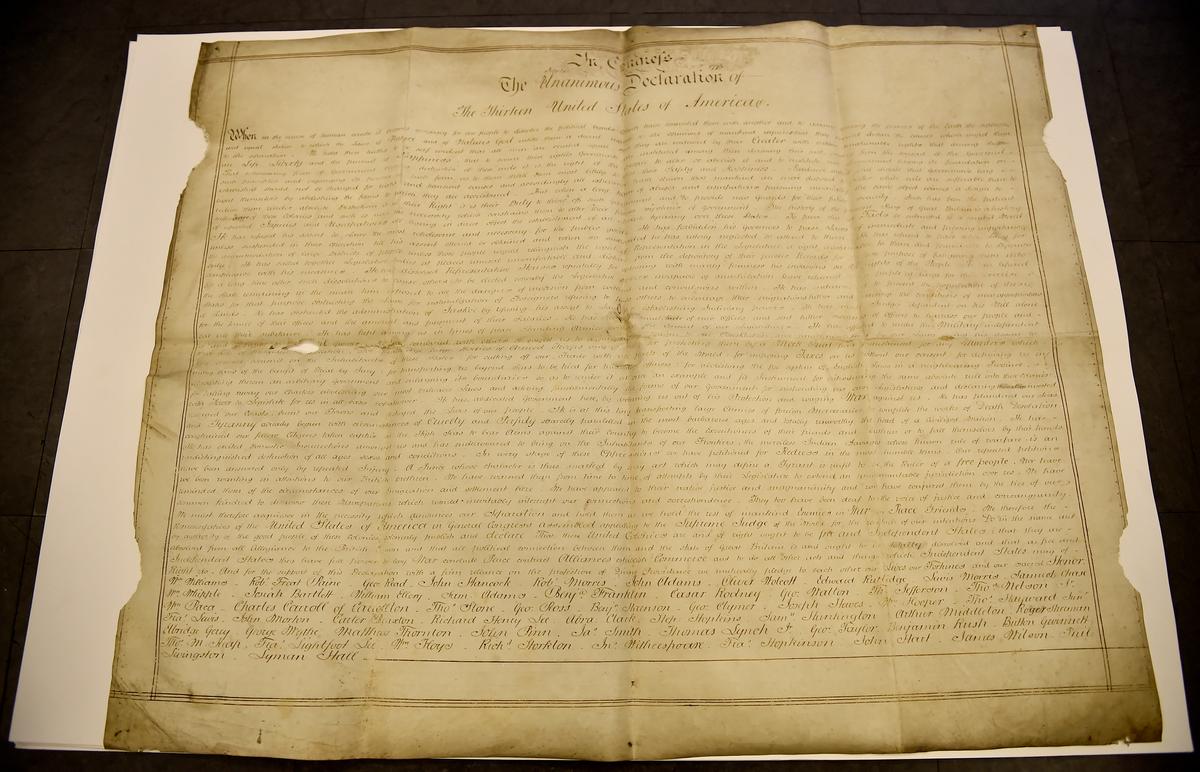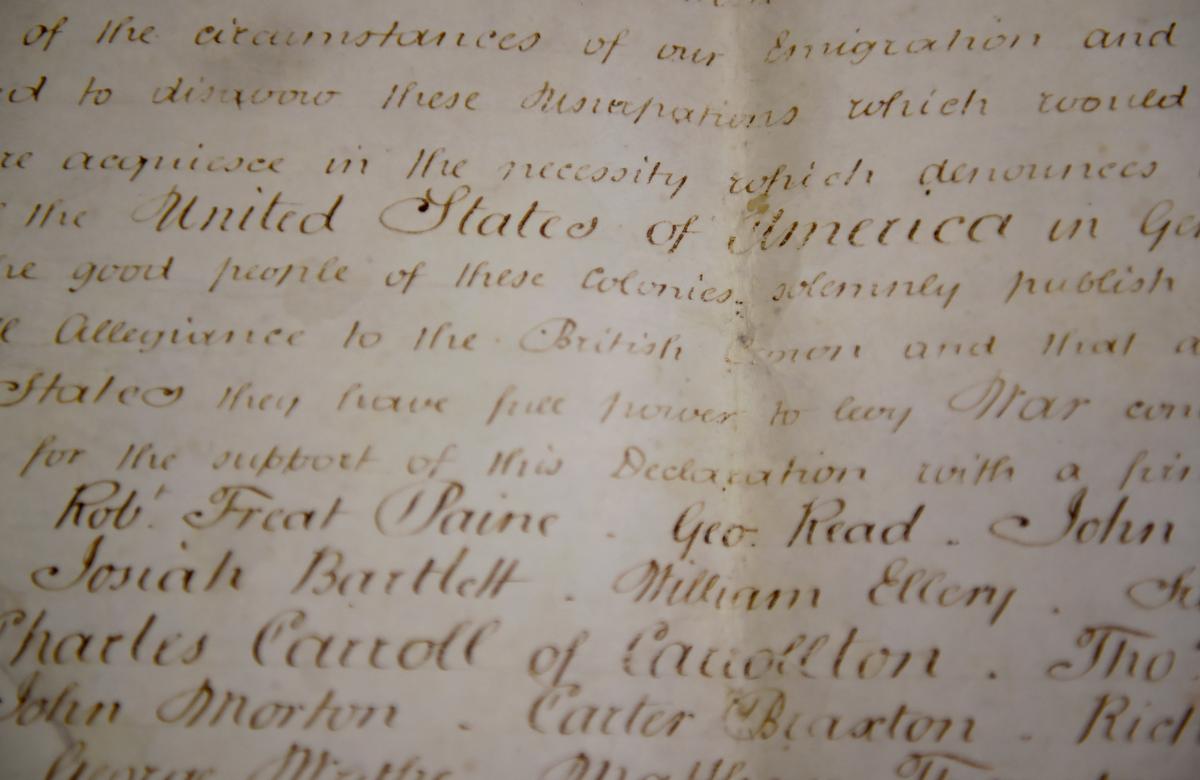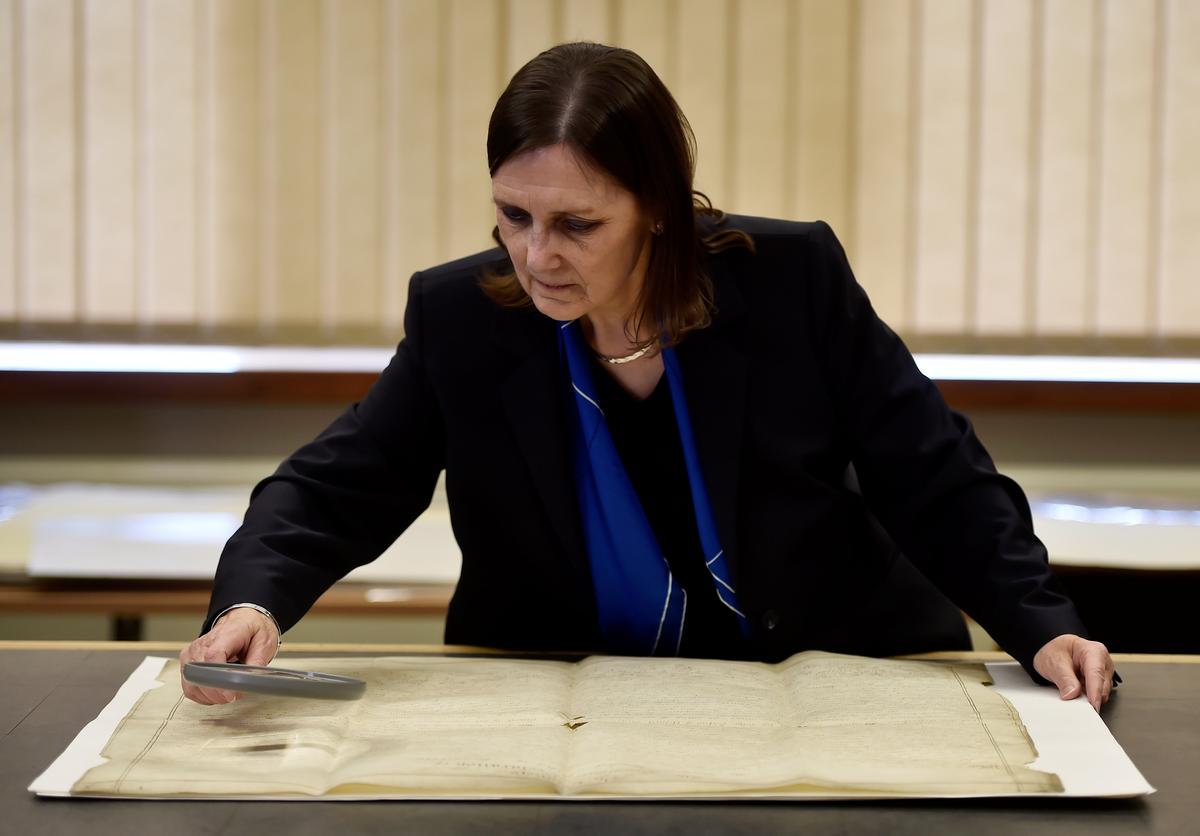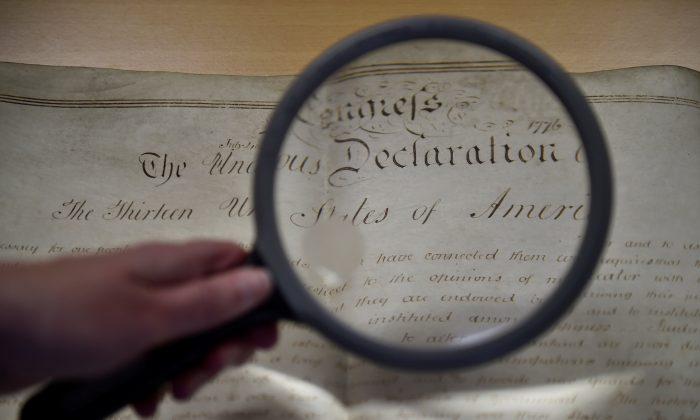CHICHESTER, England—British experts will carry out tests to try to determine how a rare copy of the U.S. Declaration of Independence found its way to an archive in southern England.
The handwritten manuscript, only the second such parchment in existence, had been stored for more than 60 years in a strong-room among miles of documents in the West Sussex Record Office, until its significance was revealed by Harvard University researchers, Danielle Allen and Emily Sneff.
Other copies and printed versions of the Declaration exist, but the only other ceremonial parchment is the Matlack Declaration, which dates from 1776 and is kept behind glass at the National Archives in Washington.
“This document in a way raises more questions than it answers,” archivist Wendy Walker told Reuters at the record office in Chichester, a small city not far from England’s southern coast.
“How did it get to Sussex, how did it end up here? Behind all those questions are the questions of when was it made, where was it made, and why was it made and who was it made for?” she said.
Measuring 24 by 30 inches (60 by 76 cms), the Sussex Declaration, as the Harvard team have called it, is thought to date to the 1780s and most likely was written in New York or Philadelphia.

The researchers believe the parchment was originally owned by Charles Lennox, the third Duke of Richmond, who was known as the “radical Duke” because he supported the American colonists during the American Revolutionary War.
The Sussex version also differs from all other 18th century versions of the Declaration in that the list of signatories was not grouped by states. The researchers say that suggests it was commissioned by James Wilson, a Founding Father of the United States who supported a federal constitution.
Who Owns It?
Walker said the parchment would now go to the British Library for further scientific tests on the ink and the parchment, which has been nibbled at the edges by mice, to try to determine who actually owns it.
“They will do hyperspectral imaging, which is looking at the document to see things which the naked eye can’t see, so there'll be a whole series of tests and forensic examination being done on it over the summer, hopefully to give us a few more answers,” she said.
The Sussex office, which houses eight miles of archives dating back 1200 years in a modern building near the center of Chichester, knew the parchment had been held in its collection for decades but had not realized how rare it was.

“It’s been known about for a while. It’s on our online catalog and we published a book about it in 1976,” Walker said. “We knew we had it, we knew what it was, but we didn’t have the knowledge that they have brought to it in terms of the connection with the original.”
It was among a mass of documents given to the record office by Leslie Holden, a lawyer who worked for a local firm called Rapers in 1956.
It is believed that a Rapers senior partner told Holden to dispose of documents belonging to the Dukes of Richmond, whose family home is the nearby Goodwood Estate. As an amateur historian, Holden handed them over to the record office, including the Declaration parchment.
“We know who the depositor was. What we’re trying to find out, I think, is the history behind that, what happened before it came here,” Walker said.
“When you first open it up and you look at it, it looks just like any other late 18th century, early 19th century title deeds, of which there are thousands in the strong-room. Of course when you start to read it, you realize it’s something special.”

For the time being the parchment, which has been valued and insured for a sum Walker declined to disclose, remains under lock and key in the record office.
While its emergence in a quiet corner of England might have caused some surprise, Walker said there were longstanding links between Sussex and America, most notably Thomas Paine, another of the U.S. Founding Fathers, and George Washington, the first U.S. president, whose ancestors lived in the county.
“The connections are there and I think it is really interesting to see this latest bit in the puzzle and how that fits in,” she said.






Friends Read Free